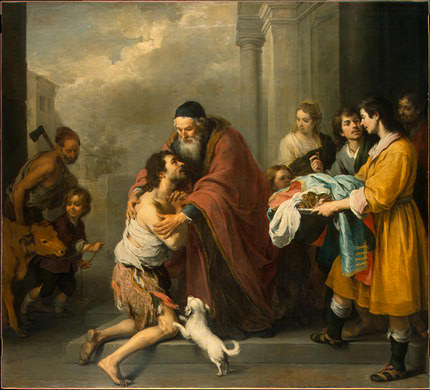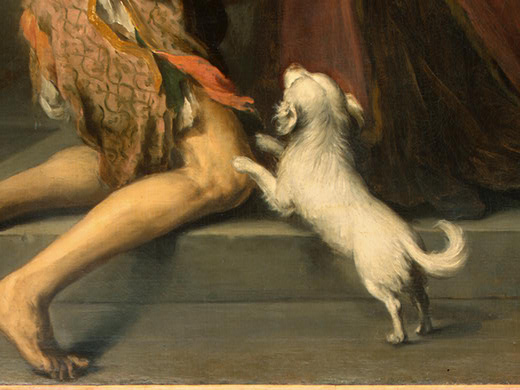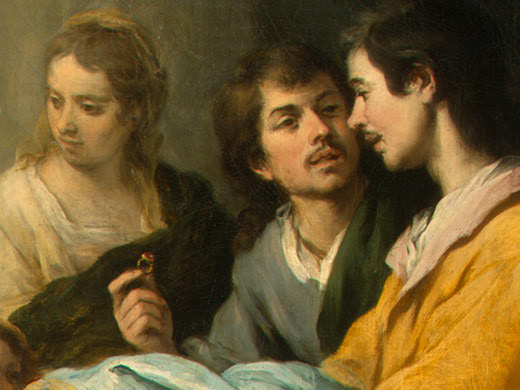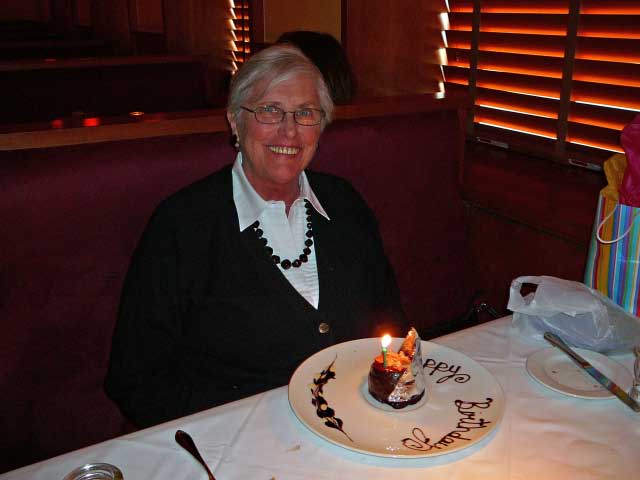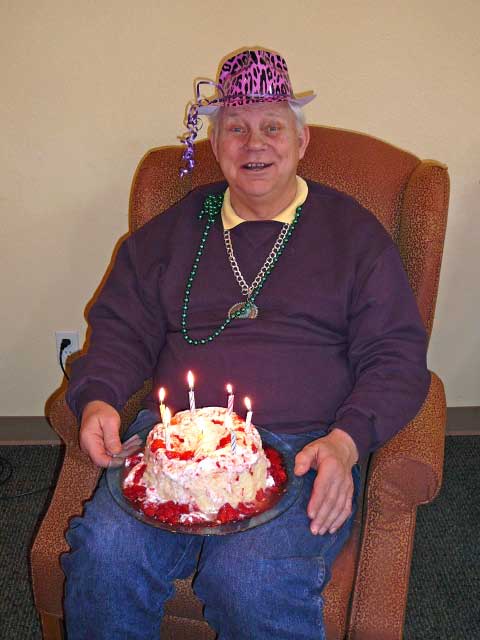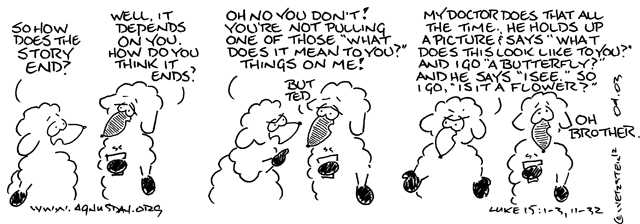The fourth Sunday of Lent is sometimes
referred to as “Laetare Sunday,” from the Latin word meaning “rejoice.” This
theme is echoed in all of the scripture readings for this week, especially in
the parable of the forgiving father in the gospel of
Luke.
Rejoice!
20So he set off and went to his father. But while he was
still far off, his father saw him and was filled with compassion; he ran and put
his arms around him and kissed him. 21Then the son
said to him, 'Father, I have sinned against heaven and before you; I am no
longer worthy to be called your son.' 22But the father
said to his slaves, 'Quickly, bring out a robe—the best one—and put it on him;
put a ring on his finger and sandals on his feet.
23And get the fatted calf and kill it, and let us eat
and celebrate; 24for this son of mine was dead and is
alive again; he was lost and is found!' And they began to celebrate.
Luke
15:1-3, 11b-32
Bartolomé Esteban Murillo
*
The Return of the Prodigal Son,
1667/1670
National Gallery of Art,
Washington, DC
We must
not, in trying to think about
how we
can make a big difference,
ignore
the small daily differences we can make which,
over
time, add up to big differences
that we
often cannot foresee.
~ Marian Wright Edelman
Don't ask what the
world needs.
Ask what makes you
come alive, and go do it.
Because what the
world needs is people who have come alive.
~ Howard Thurman
Vicki's Happy Birthday
dinner!!!
... at John Elway's
Restaurant
Wednesday morning at the
Bear Creek Tavern/Restaurant
It is so nice to see the
stream burbling again and the wild life able to walk in
it!
Chuck ... one of our
Memories in the Making artists
(Chuck is a former NFL
player.)
I believe I found
the missing link
between animal
and civilized man.
It is
us.
~ Konrad
Lorenz
March 18,
2007 Fourth Sunday in Lent
Previous OPQs may be
found at:
* National Gallery of
Art Brief Guide
Murillo's great talent for
dramatic painting is apparent in this monumental depiction of the familiar
parable of the prodigal son, an allegory of repentance and divine forgiveness.
With players and props effectively placed to underscore the drama, it is
reminiscent of a well-staged theater piece.
The artist selected the essential
elements of the story's climax: the penitent son welcomed home by his
forgiving father; the rich garments and ring that signify the errant son's
restoration to his former position in the family; and the fatted calf being
led to the slaughter for the celebratory banquet. The larger-than-life,
central, pyramidal grouping of father and son dominates the picture, while the
richest color is reserved for the servant bearing the new garments. Murillo
may have chosen to emphasize that aspect of the parable -- symbolic of charity
-- because of the nature of the commission. The Return of the Prodigal
Son was one of eight huge canvases painted for the Church of the Hospital
of Saint George in Seville, a hospice for the homeless and
hungry.
Murillo's model was the life
around him; part of the appeal of this canvas lies in its human touches -- the
realism of the prodigal's dirty feet, the puppy jumping up to greet his
master, and perhaps most of all, the ingenuous smile of the little urchin
leading the calf.
31Then the father said to him, 'Son, you are always with me,
and all that is mine is yours. 32But we had to
celebrate and rejoice, because this brother of yours was dead and has come to
life; he was lost and has been found.'"
Luke 15:1-3,
11b-32
Agnus Day, by James
Wetzstein
Joshua 5:9-12
Psalm
32:1-11
2 Corinthians 5:16-21
Luke 15:1-3, 11b-32
